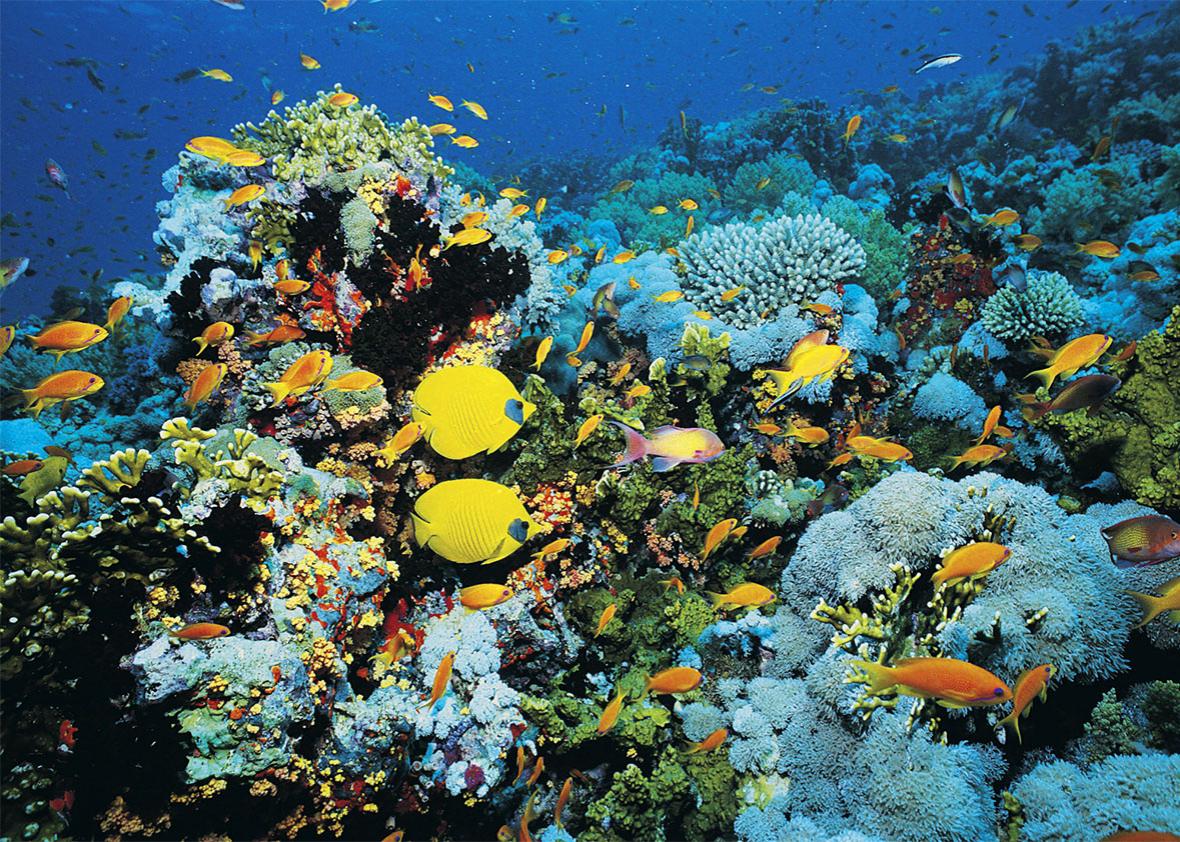Thirty major rivers and hundreds of small streams comprise the Great Barrier Reef catchment area which covers 423000 square kilometres 163000 sq mi of land. Collectively it means the Great Barrier Reef is heading for a death by a thousand cuts.
 Great Barrier Reef Geography Ecology Threats Facts Britannica
Great Barrier Reef Geography Ecology Threats Facts Britannica
7 Bleached corals are not necessarily dead.

What is happening to the great barrier reef. Australias Great Barrier Reefthe worlds largest coral reefis a unique marine ecosystem threatened by global warming. This ecosystem is home to over 1500 species of fish other marine life like sea turtles and reef sharks and obviously the coral itself. Even with such majestic beauty the Great Barrier Reef.
The majority of damage has occurred in the northern portion of the reef. Cairns Marine Biologists Stuart Ireland from Calypso Productions and Gareth Phillips from Reef Teach give an update on the conditions of the Great Barrier Reef on 20 February 2020 as part of their Reef Today series. To reduce the severity of future coral bleaching and eventually prevent it altogether we must slow down the warming of our oceans by rapidly switching to 100 renewable power by 2035.
Many factors are putting the Great Barrier Reef in peril. The reef system which stretches over 2300 km off the coast of Australia was severely damaged by rising water temperatures in May but there is still a glimmer of hope for its recovery. Heres a fun fact.
Bleaching has been observed on the Great Barrier Reef since 1982 with severe bleaching events occurring during the El Niño of 1997-98 and later in. The Great Barrier Reef is made up of 2900 smaller reefs and of the 911 reefs that were recently studied 93 percent were marred by some sort of bleaching. Climate change is the greatest threat facing the reef and a challenge we must all tackle together.
Climate change is the Great Barrier Reefs biggest threat causing rising sea temperatures ocean acidification and extreme weather events. The bleaching of these reefs occurs when rising water temperatures cause corals to expel algae living in their tissue. In 2016 and 2017 the Great Barrier Reef was hit with a massive marine heat wave leading to the longest coral-bleaching events ever recorded.
The Great Barrier Reef has just experienced the worst coral bleaching event weve ever seen triggered by the mining and burning of fossil fuels. Great Barrier Reef Gully and Streambank Joint Program. Unexplained outbreaks of Crown of Thorns starfish rust-colored 21-armed starfish covered in venomous spines that can drain coral of nutrients in one to three hours since 1986 the Crown of Thorns have been responsible for 20 percent of the Great Barrier Reefs coral loss.
The Great Barrier Reef is the largest living thing on Earth -coming in at 25 million years old. Removing top predators by fishing eg. The research team attributes this.
This combination of life has made for an area of the world that needs to be preserved. The sequential mass coral bleaching we are witnessing on the Great Barrier Reef is the literal effect of climate change. Drastically increased coastal runoff the 35 catchments that.
The Great Barrier Reef Outlook Report for 2009 lists a range of actions that are of significant risk to the conservation Reef ecosystems. Flood plume extending 60. The growing combination of rising water temperatures poorer water quality from sediment run-off and pollution as well as more severe cyclones and crown-of-thorns starfish outbreaks are just some of the threats creating a perfect storm for our Reef and the marine life that depends on it.
This amazing natural wonder is undoubtably in danger of dying out but its not dead yet thats the good news. Damage to the reef could harm the. How did the Great Barrier reef die.
This video was shot at Moore Reef. Wait dont stop reading now and forget about the issue at hand. The Australian and Queensland governments in 2016 announced the Great Barrier Reef Gully and Streambank Joint Program.
11 of the 12 hottest years have been since 2000. According to new research from the Australian Institute of Marine Science AIMS the Great Barrier Reef has lost half of its coral cover in the last 27 years. All but two are happening now and most are steadily getting worse.
Bleaching is not a death. Water quality was first identified as a threat to the Great Barrier Reef in 1989. The Great Barrier Reef can be seen from space.
The southern half has avoided severe damage. A closer encounter with the Great Barrier Reefs impressive coral gardens reveals many astounding underwater attractions including the worlds largest collection of corals in fact more than 400 different kinds of coral coral sponges molluscs rays dolphins over 1500 species of tropical fish more than 200 types of birds around 20 types of reptiles including sea turtles and giant clams over. This Program will focus on remediating gully and streambank erosion to significantly reduce the amount of sediment entering the Reef.
Sharks catch fish of conservation concern while fishing illegal fishing or collecting death of discarded species during fishing or collecting fishing in unprotected fish spawning areas and poaching illegal.
